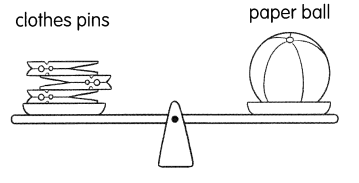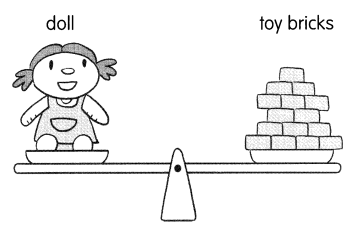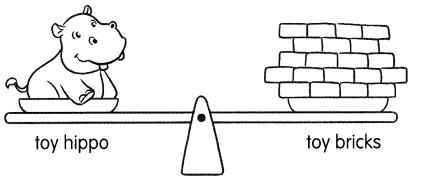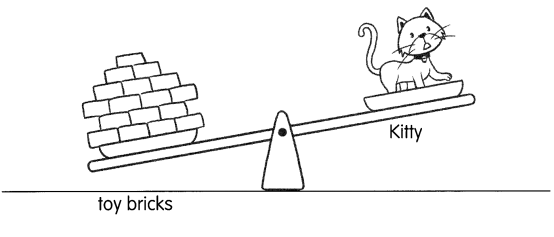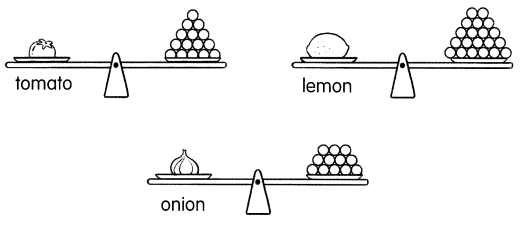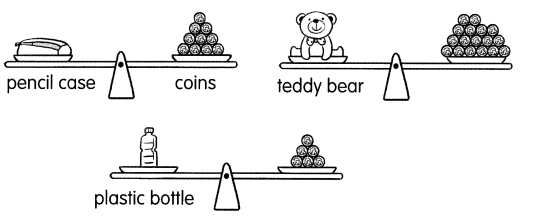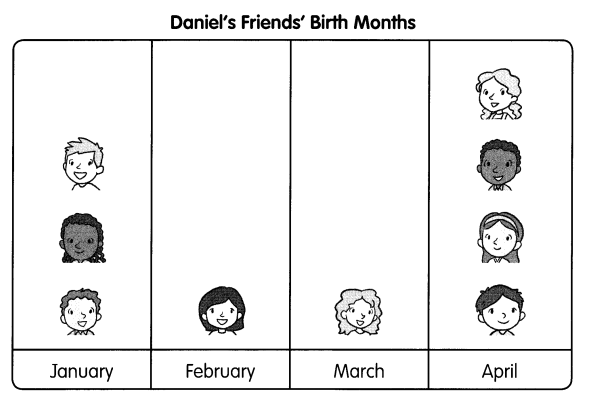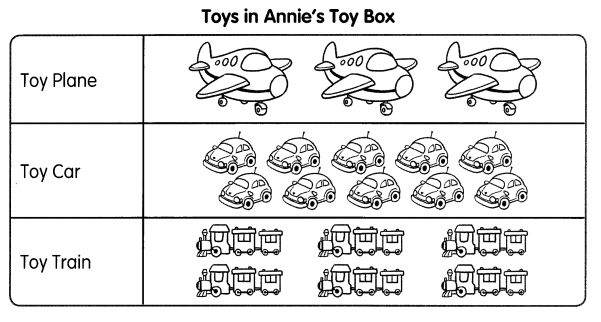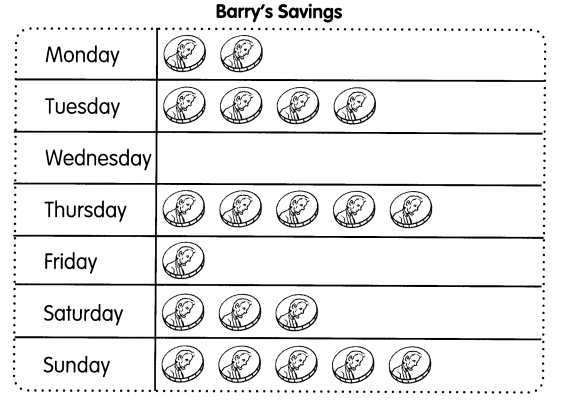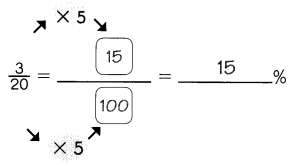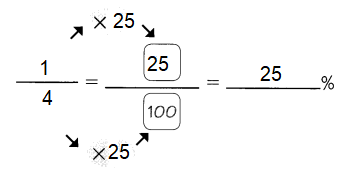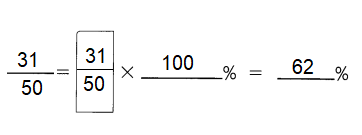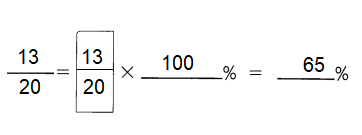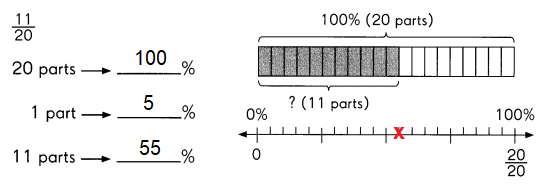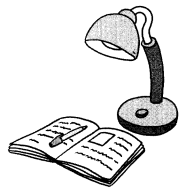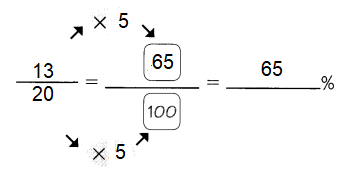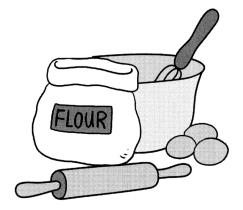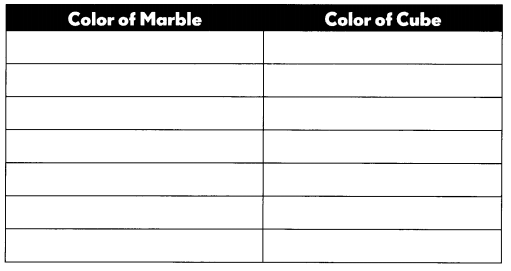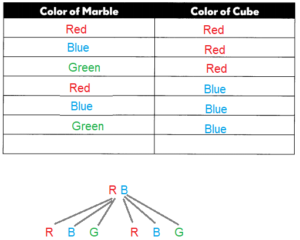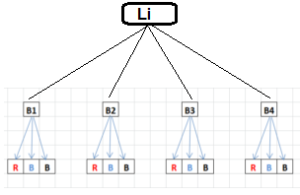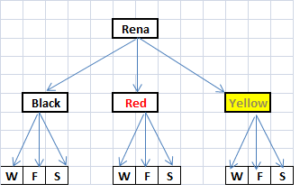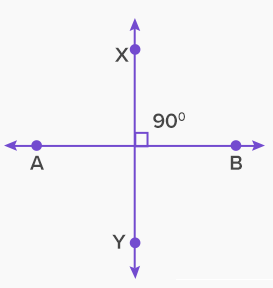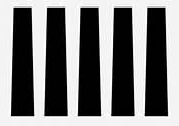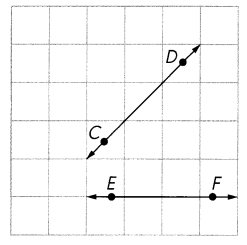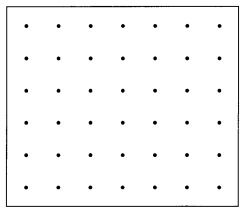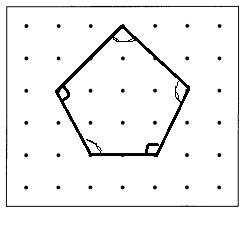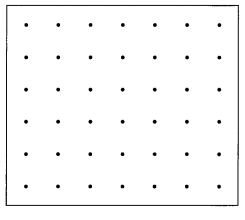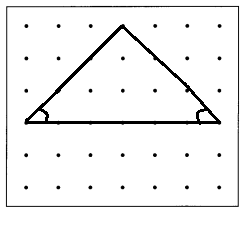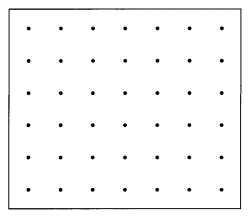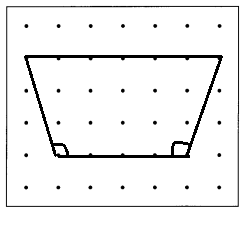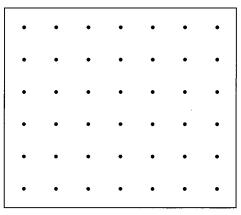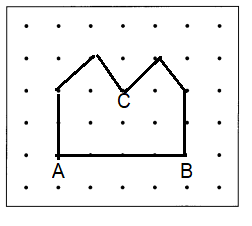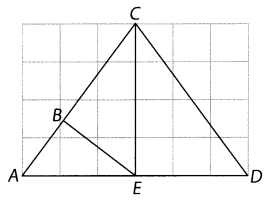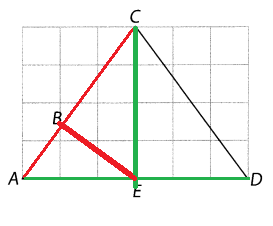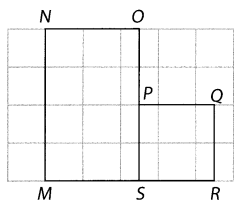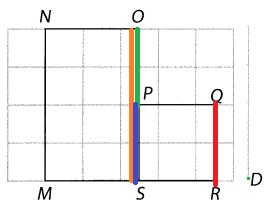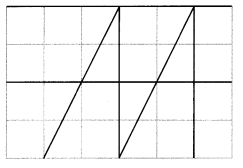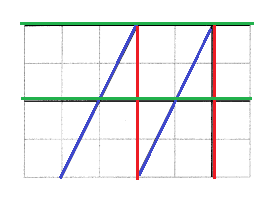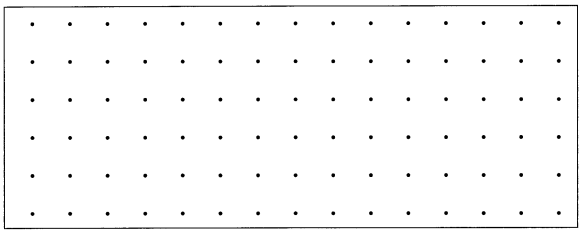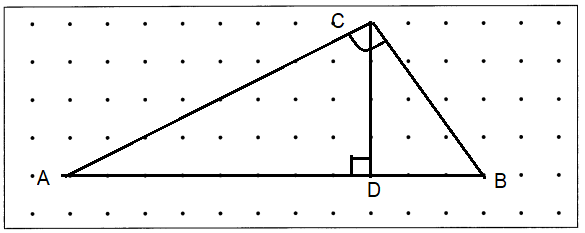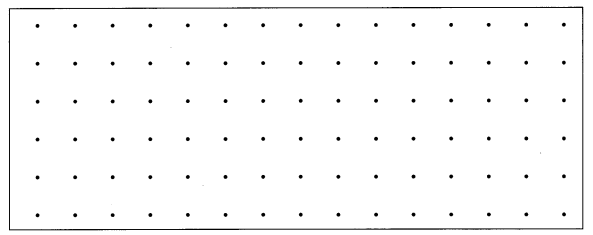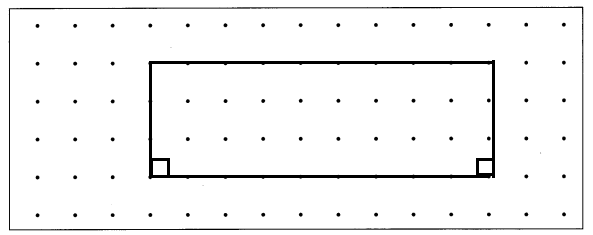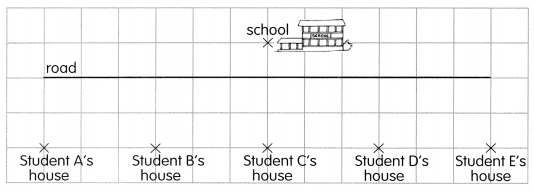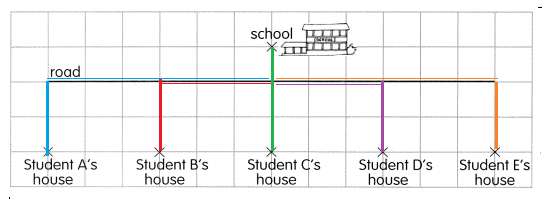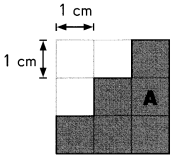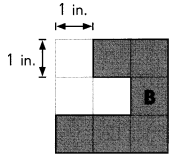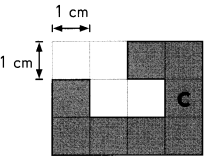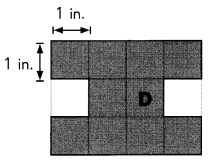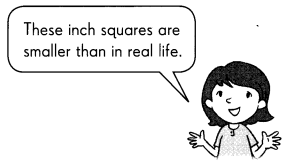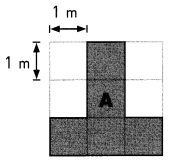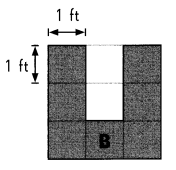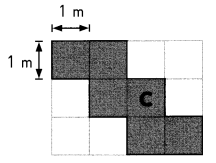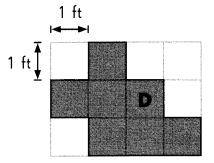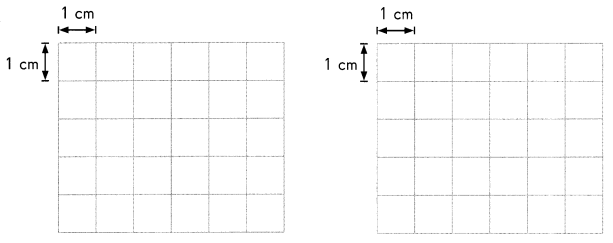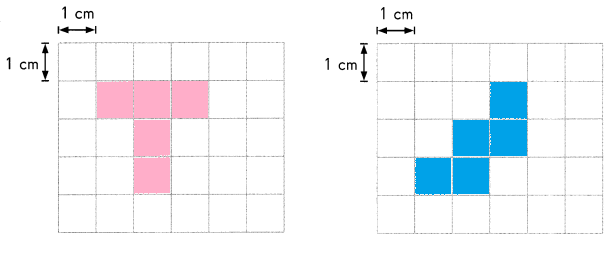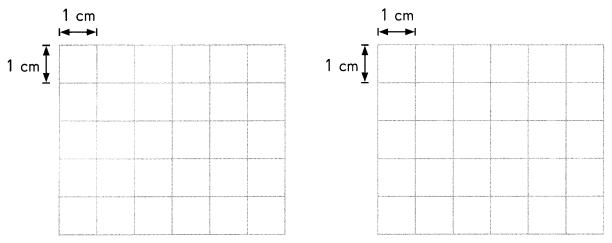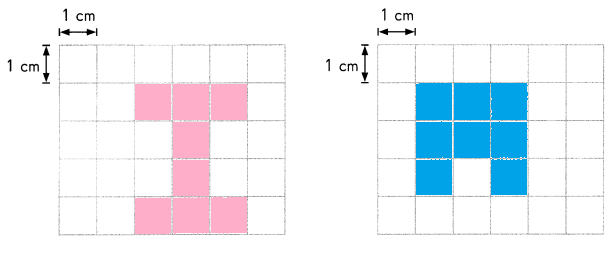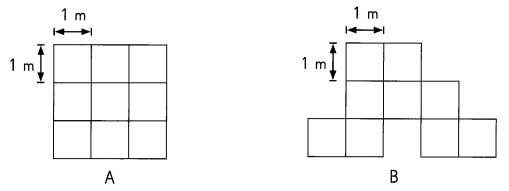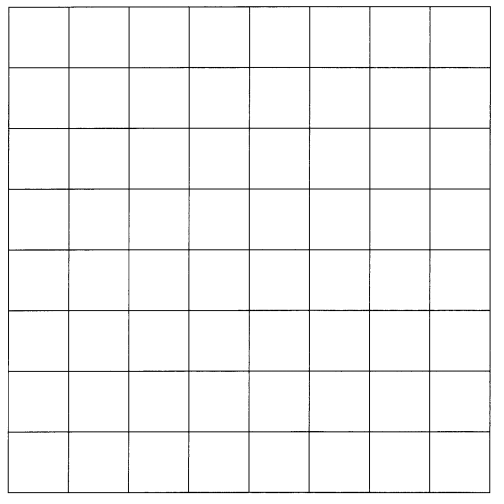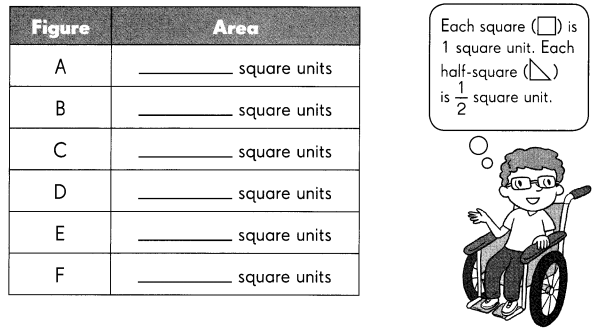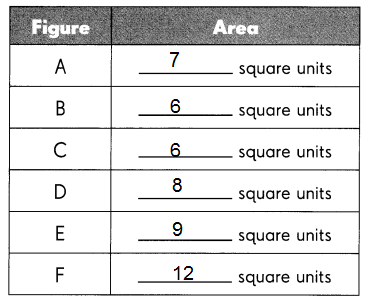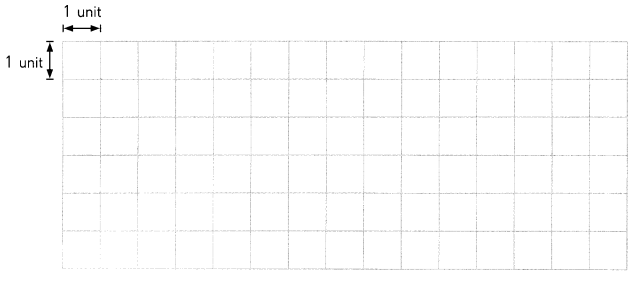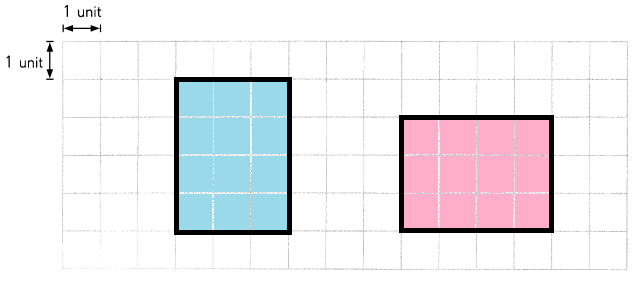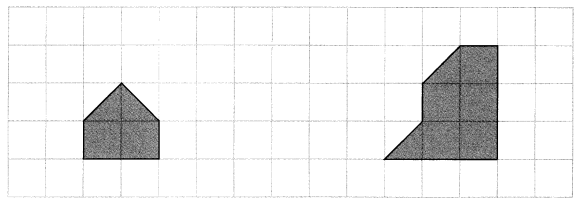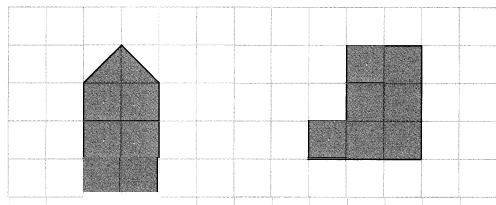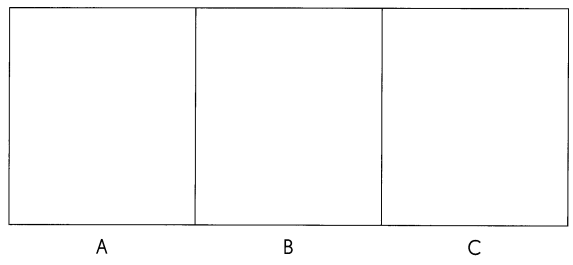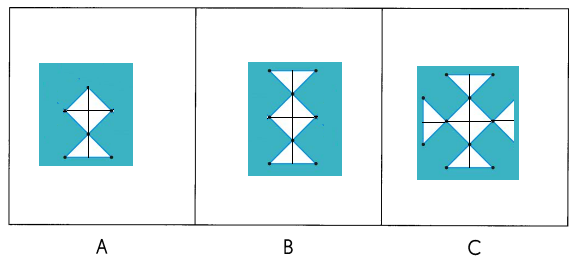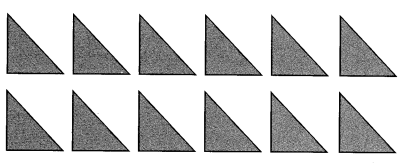This handy Math in Focus Grade 5 Workbook Answer Key Chapter 11 Practice 2 Graphing an Equation provides detailed solutions for the textbook questions.
Math in Focus Grade 5 Chapter 11 Practice 2 Answer Key Graphing an Equation
Write the ordered pair for each point.
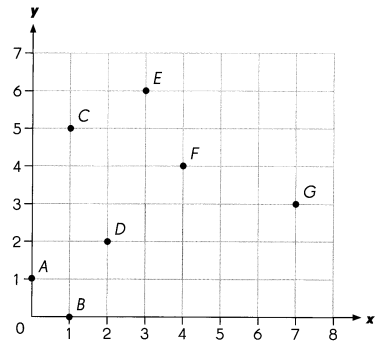
Example
A (0, 1)
Question 1.
B ___
Answer:
B(1,0)
Explanation:
An ordered pair is used to show the position on a graph,
where the “x” (horizontal) value is first, and the “y” (vertical) value is second.
Question 2.
C ____
Answer:
C(1,5)
Explanation:
The numbers on a coordinate grid are used to locate points.
Each point can be identified by an ordered pair of numbers;
that is, a number on the x-axis called an x-coordinate, and a number on the y-axis called a y-coordinate.
Question 3.
D ___
Answer:
D(2,2)
Explanation:
An ordered pair is used to show the position on a graph,
where the “x” (horizontal) value is first, and the “y” (vertical) value is second.
Question 4.
E ____
Answer:
E(3,6)
Explanation:
The numbers on a coordinate grid are used to locate points.
Each point can be identified by an ordered pair of numbers;
that is, a number on the x-axis called an x-coordinate, and a number on the y-axis called a y-coordinate.
Question 5.
F ____
Answer:
F(4,4)
Explanation:
An ordered pair is used to show the position on a graph,
where the “x” (horizontal) value is first, and the “y” (vertical) value is second.
Question 6.
G ____
Answer:
G(7,3)
Explanation:
The numbers on a coordinate grid are used to locate points.
Each point can be identified by an ordered pair of numbers;
that is, a number on the x-axis called an x-coordinate, and a number on the y-axis called a y-coordinate.
Plot each point on the coordinate grid.
Question 7.
P(0, 5)
Answer:
The location of (0,5) is shown on the coordinate grid below.
The x-coordinate is 0.
The y-coordinate is 5.
To locate (0,5), move 0 units to the right on the x-axis and 5 units up on the y-axis.
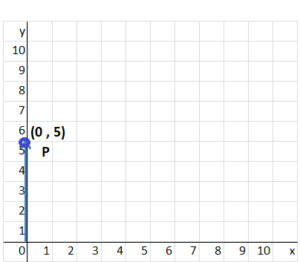
Explanation:
The numbers on a coordinate grid are used to locate points.
Each point can be identified by an ordered pair of numbers;
that is, a number on the x-axis called an x-coordinate, and a number on the y-axis called a y-coordinate.
P(x,y) = (0,5)
Question 8.
Q(4, 0)
Answer:
The location of (4,0) is shown on the coordinate grid below.
The x-coordinate is 4.
The y-coordinate is 0.
To locate (4,0), move 4 units to the right on the x-axis and 0 units up on the y-axis.

Explanation:
The numbers on a coordinate grid are used to locate points.
Each point can be identified by an ordered pair of numbers;
that is, a number on the x-axis called an x-coordinate, and a number on the y-axis called a y-coordinate.
P(x,y) = (4,0)
Question 9.
R(3, 6)
Answer:
The location of (3,6) is shown on the coordinate grid below.
The x-coordinate is 4.
The y-coordinate is 0.
To locate (3,6), move 3 units to the right on the x-axis and 6 units up on the y-axis.

Explanation:
The numbers on a coordinate grid are used to locate points.
Each point can be identified by an ordered pair of numbers;
that is, a number on the x-axis called an x-coordinate, and a number on the y-axis called a y-coordinate.
R(x,y) = (3,6)
Question 10.
S(5, 1)
Answer:
The location of (5,1) is shown on the coordinate grid below.
The x-coordinate is 5.
The y-coordinate is 1.
To locate (5,1), move 5 units to the right on the x-axis and 1 units up on the y-axis.
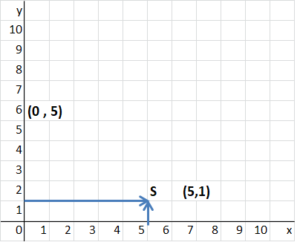
Explanation:
The numbers on a coordinate grid are used to locate points.
Each point can be identified by an ordered pair of numbers;
that is, a number on the x-axis called an x-coordinate, and a number on the y-axis called a y-coordinate.
S(x,y) = (5,1)
Question 11.
T(2, 5)
Answer:
The location of (2,5) is shown on the coordinate grid below.
The x-coordinate is 2.
The y-coordinate is 5.
To locate (2,5), move 2 units to the right on the x-axis and 5 units up on the y-axis.
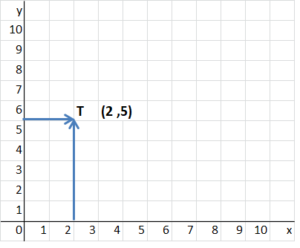
Explanation:
The numbers on a coordinate grid are used to locate points.
Each point can be identified by an ordered pair of numbers;
that is, a number on the x-axis called an x-coordinate, and a number on the y-axis called a y-coordinate.
T(x,y) = (2,5)
Question 12.
U(0, 0)
Answer:
The location of (0,0) is shown on the coordinate grid below.
The x-coordinate is 0.
The y-coordinate is 0
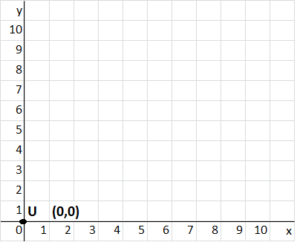
Explanation:
The numbers on a coordinate grid are used to locate points.
Each point can be identified by an ordered pair of numbers;
that is, a number on the x-axis called an x-coordinate, and a number on the y-axis called a y-coordinate.
U(x,y) = (0,0)
The location of (0,0) is shown on the coordinate grid below. The x-coordinate is 0. The y-coordinate is 0

ANSWER:
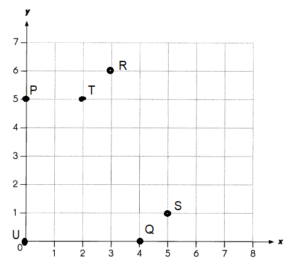
Explanation:
The numbers on a coordinate grid are used to locate points.
Each point can be identified by an ordered pair of numbers;
that is, a number on the x-axis called an x-coordinate, and a number on the y-axis called a y-coordinate.
Use the graph to answer the questions
The perimeter of a square is P centimeters and the length of each side is s centimeters. A graph of P = 4s is drawn.
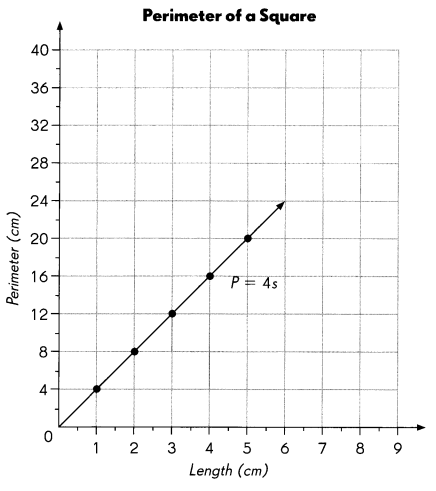
Question 13.
What is the perimeter of a square of side 2 centimeters? ___________
Answer:
8 centimeters
Explanation:
Perimeter of square = 4s
s = 2
P = 4 x 2 = 8 cm
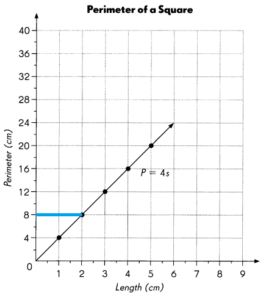
Question 14.
What is the perimeter of a square of side 4.5 centimeters? ___________
Answer:
18 centimeters
Explanation:
P=4s
s = 4.5
P = 4 x 4.5 = 18 cm
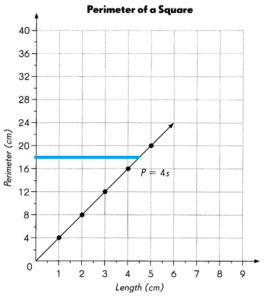
Question 15.
What is the length of a side of a square if its perimeter is 4 centimeters? ____________
Answer:
16 centimeters
Explanation:
Perimeter of square = 4s
s = 4
P = 4 x 4 = 16cm
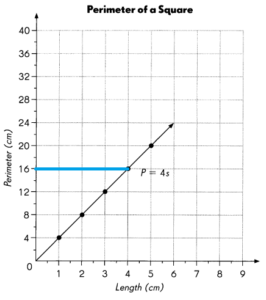
Question 16.
What is the length of a side of a square if its perimeter is 10 centimeters? ____________
Answer:
2.5 centimeter
Explanation:
Perimeter of square = 4s
P=10
10 = 4 x s = 2.5 cm
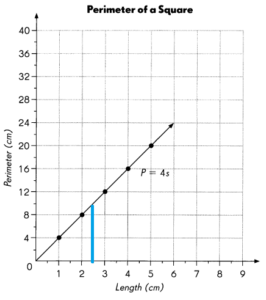
Question 17.
If the point (7, M) is on the graph what is the value of M? ___________
Answer:
M = 28
Explanation:
Perimeter of square = 4s
s = 7
P = 4 x 7 = 28
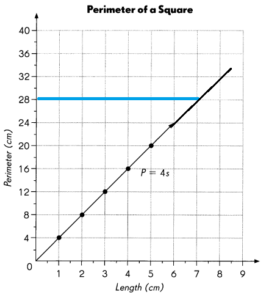
The line starting from (0,0) is extended to upwards, x is 7 and the value is 28
Complete the table.
Question 18.
Each bottle contains 2 liters of cooking oil.

Answer:

Explanation:
Each bottle contains 2 liters of cooking oil.
Number of bottles are represented with x.
Number of liters are represented with y.
So, y = x X y.
Complete the graph using the data in the table. Then answer the questions.

Question 19.
How many liters of oil are in 3 bottles? _____
Answer:
6 liters
Explanation:
Volume = 2xb is the equation can be used
V = 2 x 3 = 6 liters
on graph
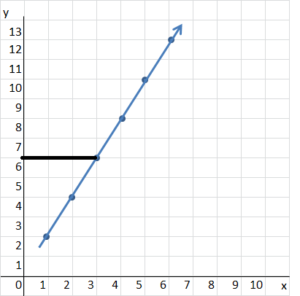
Question 20.
How many liters of oil are in 2.5 bottles? ____
Answer:
5 liters
Explanation:
Volume = 2xb is the equation can be used
V = 2 x 2.5 = 5 liters
on graph
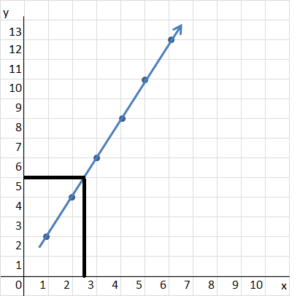
Question 21.
How many bottles contain 8 liters of oil? ____
Answer:
4 bottles
Explanation:
Volume = 2xb is the equation can be used
8 = 2 x b
on graph

Question 22.
How many bottles contain 7 liters of oil?
Answer:
3.5 bottles
Explanation:
Volume = 2xb is the equation can be used
7 = 2 x b
on graph
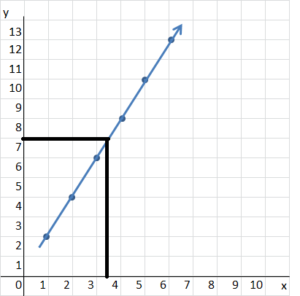
Question 23.
How many bottles contain 11 liters of oil? ___
Answer:
5.5 bottles
Explanation:
Volume = 2xb is the equation can be used
11 = 2 x b = 5.5
on graph

